
| MUSH / URU-MUSH / RIMUSH
Head of a ruler, ca. 2300–2000 BC, Iran or Mesopotamia. Metropolitan Museum of Art
Mush / Uru-Mush / Rimush (or Rimuš, Ri-mu-uš) was the second king of the Akkadian Empire. He was the son of Sargon of Akkad and Queen Tashlultum. He was succeeded by his brother Manishtushu, and was an uncle of Naram-Sin of Akkad. Rimush was known as King of Akkad, King of Kish and King of Sumer King of the Universe.
Sumerian
King List :
A number of his votive offerings have been found in excavated temples in several Mesopotamian cities.
Destruction of Sumerian city-states :
Akkadian archer in tufted garment, indicating a high-ranking official, possibly Rimush himself According to his inscriptions, he faced widespread revolts, and had to reconquer the cities of Ur, Umma, Adab, Lagash, Der, and Kazallu from rebellious ensis:
"Rimuš, king of the world, in battle over Adab and Zabalam was victorious, and 15,718 men he struck down, and 14,576 captives he took. Further, Meskigala, governor of Adab, he captured, and Lugalgalzu, governor of Zabalam, he captured. Their cities he conquered, and their walls he destroyed. Further, from their two cities many men he expelled, and to annihilation he consigned them"
-
Adab and Zabalam Inscription of Rimus.
-
Inscription of Rimus.
Rimush introduced mass slaughter and large scale destruction of the Sumerian city-states, and maintained meticulous records of his destructions. Most of the major Sumerian cities were destroyed, and Sumerian human losses were enormous :
Victory Stele of Rimush over Lagash :
Fragments of the Victory Stele of Rimush. The Victory Stele also has an epigraphic fragment, mentioning Akkad and Lagash. It suggests the stele represents the defeat of Lagash by the troops of Akkad A Victory Stele in several fragments (three in total, Louvre Museum, AO 2678 for the relief and AO 2679 for the inscriptions, with possibly another fragment from the Yale Babylonian Collection YBC 2409) has been attributed to Rimush on stylistic and epigraphical grounds. One of the fragments mentions Akkad and Lagash. The style is airy and the figures are more refined than those from the time of Sargon of Akkad. One fragment in the main inscription probably contains parts of the name of Rimush himself.
It is thought that the stele represents the defeat of Lagash by the troops of Akkad. The prisoners depicted in the relief are visibly Mesopotamian, and their slaughtering at the hand of Akkadian soldiers is consistent with the known accounts of Rimush. The stele was excavated in ancient Girsu, one of the main cities of the territory of Lagash. The inscription describes the attribution of large plots of land from Lagash to the Akkadian nobility, following the victory.
Possible victory stele of king Rimush (front) Generally attributed to Rimush on stylistic grounds
Possible victory stele of king Rimush (back)
Detail of the slaughtering of prisoners by Akkadian troops
Detail of a soldier escorting a prisoner
A prisoner from Lagash, circa 2270 BCE, on the Victory Stele. The same hairstyle can be seen in other statues from Lagash
Fragment mentioning Akkad and Lagash, Louvre Museum, AO 2679 Campaigns against Elam and Marhashi :
Conquest of Elam and Marhashi
Account of the victories of Rimush, king of Akkad, upon Abalgamash,
king of Marhashi, and Emahsini, King of Elam. Louvre Museum AO5476.
In several inscriptions, Rimush described his conquest of Elam and
Marhashi far to the east of Sumer, even mentioning victories over
troops of Meluhha (probably India).
"Rimuš, the king of the world, in battle over Abalgamash, king of Parahshum, was victorious. And Zahara and Elam and Gupin and Meluhha within Parahšum assembled for battle, but he (Rimush) was victorious and struck down 16,212 men and took 4,216 captives. Further, he captured Emahsini, King of Elam, and all the nobles of Elam. Further he captured Sidaga'u the general of Parahšum and Sargapi, general of Zahara, in between the cities of Awan and Susa, by the "Middle River". Further a burial mound at the site of the town he heaped up over them. Furthermore, the foundations of Parahšum from the country of Elam he tore out, and so Rimuš, king of the world, rules Elam, (as) the god Enlil had shown..."
-
Inscription of Rimush (RIME 2.01.02.08).
"Abalgamash, King of Marhashi" (Abalgamash Lugal Paraahshum-ki) on one of the Rimush inscriptions (Louvre Museum, AO 5476)
Prisoner of the Akkadian Empire, nude, fettered, drawn by nose ring, with pointed beard and vertical braid. Thought to depict a typical Marhashi. 2350 - 2000 BCE, Louvre Museum AO 5683 Artifacts in the name of Rimush :
Akkadian language cuneiform on Murex shell, with name of Rimush, 23rd century BC
Vase in the name of "Rimush, King of Kish", albaster, Tello ancient Girsu
Name of Rimush on an inscription
The first known Sumerian-Akkadian bilingual tablet dates from the reign of Rimush. Louvre Museum AO 5477. The top column is in Sumerian, the bottom column is its translation in Akkadian Source :
https://en.wikipedia.org/ |
||||||||||||||||||||||||||||||||||||||||||||||||||||||||||||||||||||||
.jpg)
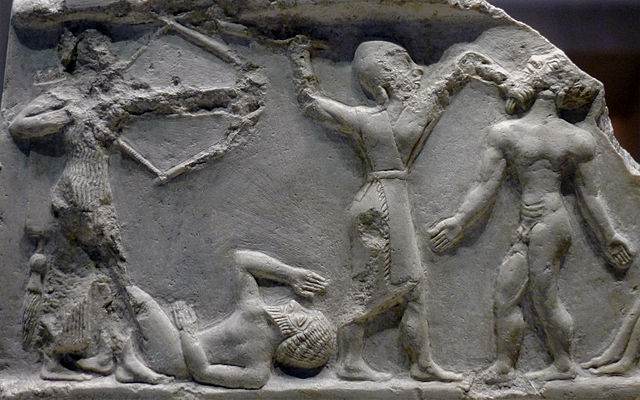
.jpg)
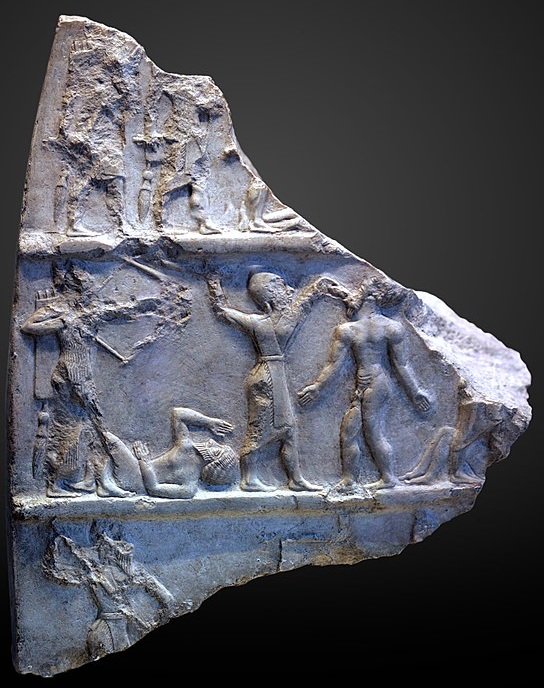
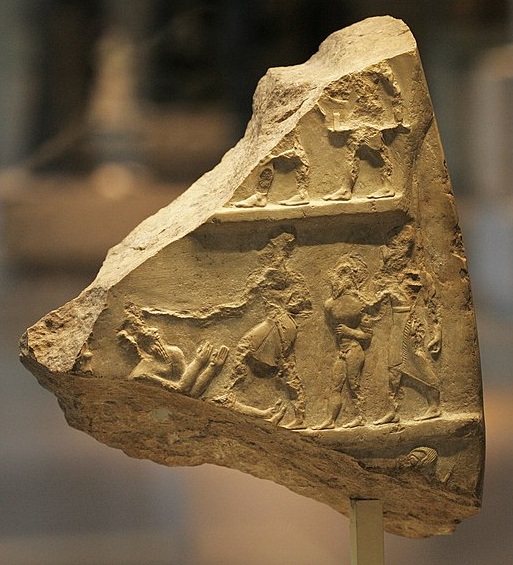

.jpg)
.jpg)
.jpg)
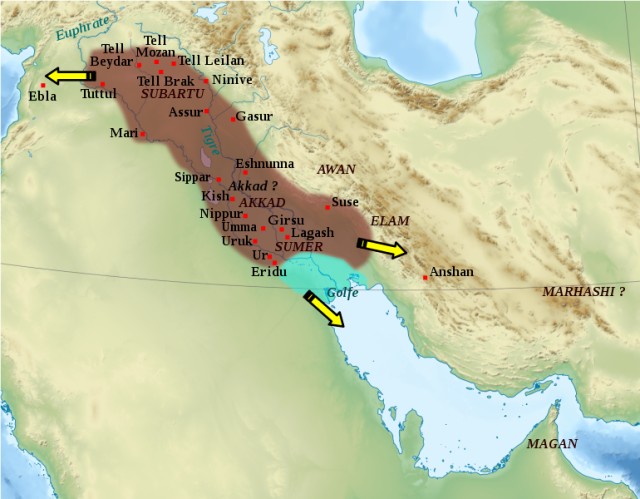
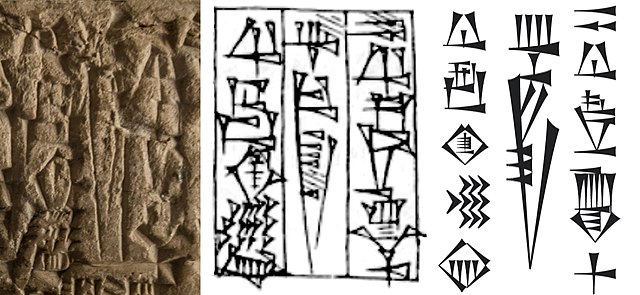
.jpg)
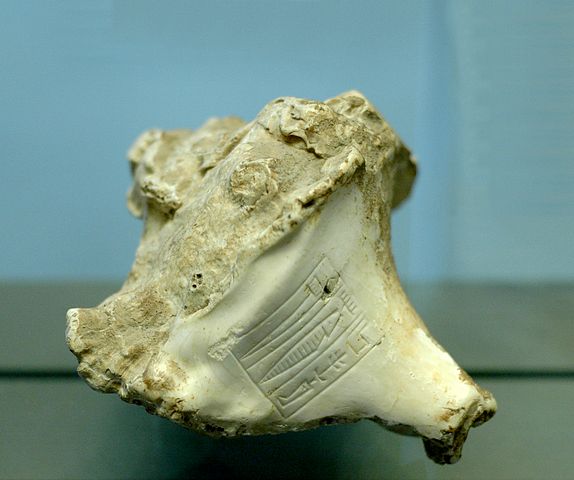

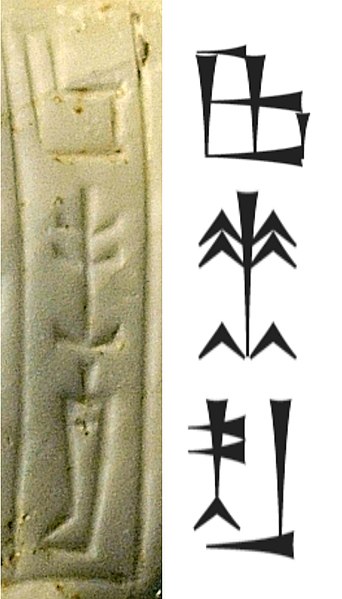
.jpg)